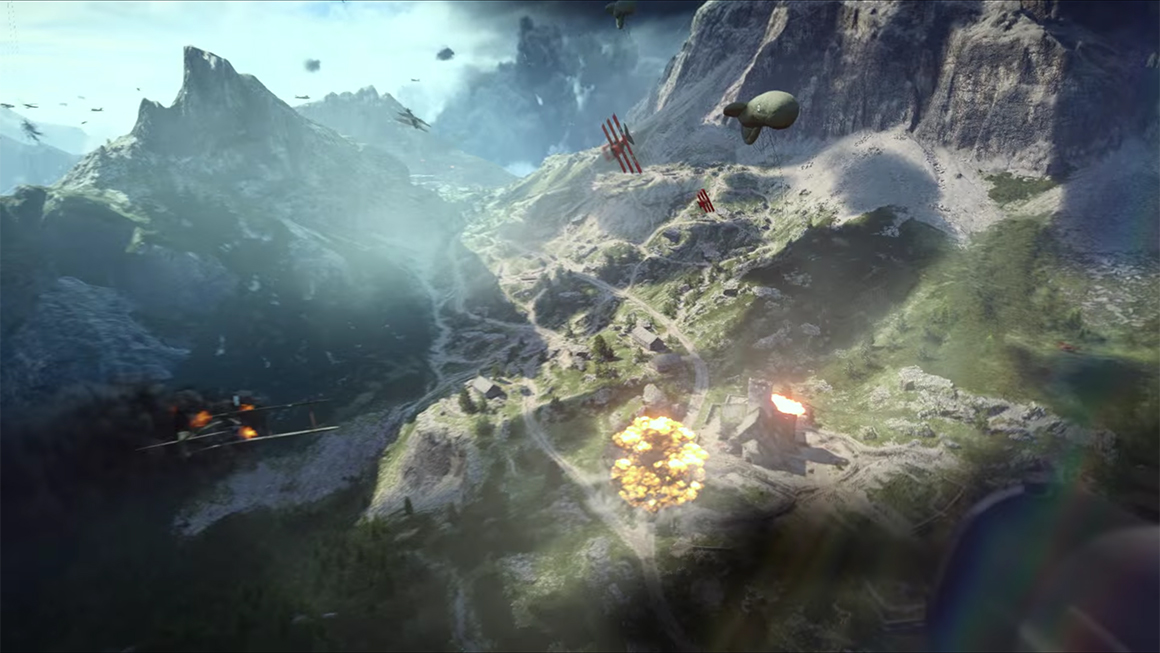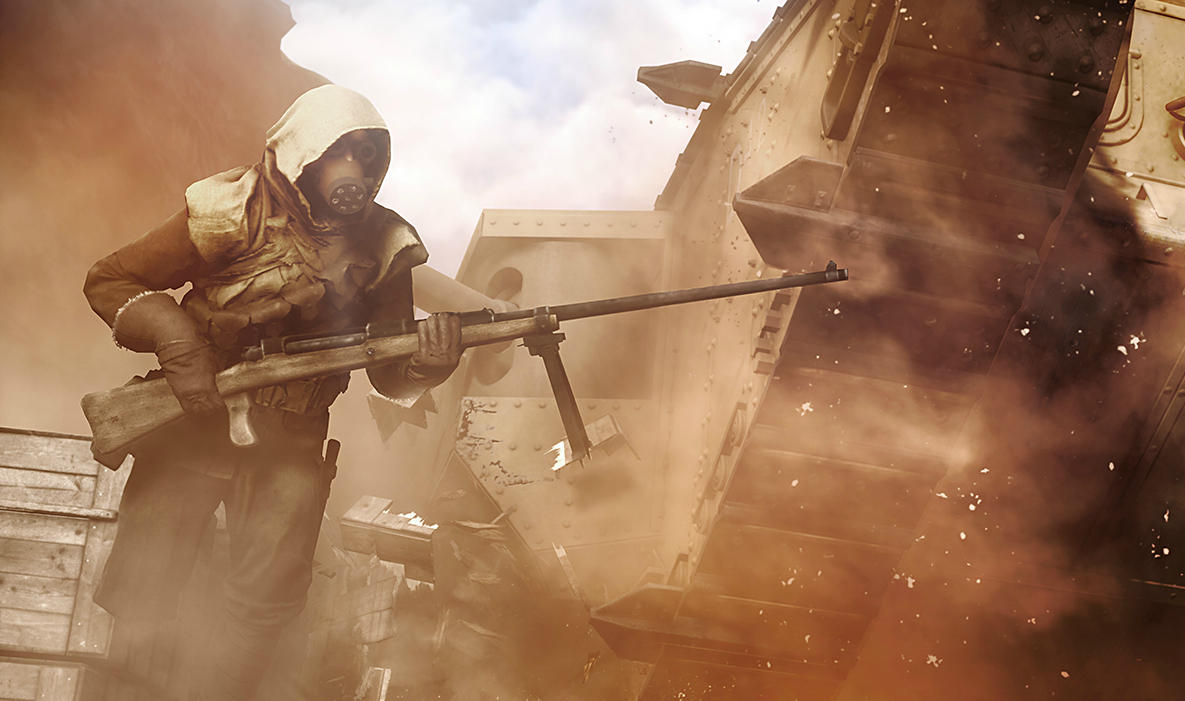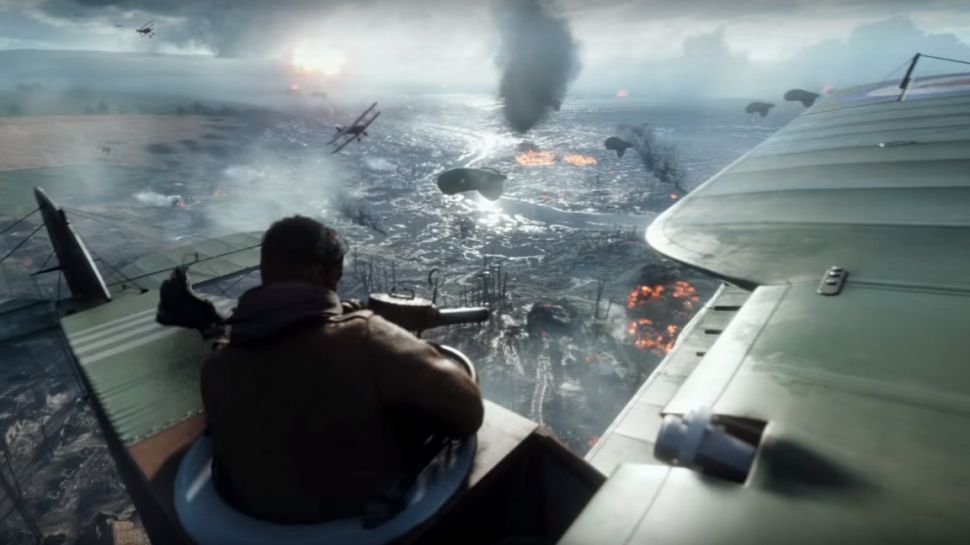I heard the whistle of the artillery before I could take cover. The shells pummeled my squad and destroyed the otherwise pastoral charm of the quaint village in Northern France. With my teammates dead and my health dangerously low, I crawled into a nearby crater for cover--crater created by the very shells that threatened my life only seconds prior.
This is what makes Battlefield 1 feel great. I've only played one match, tried a couple of character classes, driven a few different vehicles, and seen one of the promised handful of maps--but I crawled into a crater and didn't fire my weapon for another 60 seconds, only so I could hold a capture point until my team came to rescue me. Battlefield 1 shows signs of the confidence present in the franchise's early titles. The confidence to let a match unfold slowly, and let the map dictate what comes next.
"We're not trying to make a documentary," producer Alex Grondal said during at demo at E3 2016. "We're inspired by World War I, and we want to tell stories rooted in that time. But we also want it to be fun. We want to facilitate that combat that makes Battlefield unique."
Battlefield 1's setting was one of the earliest hurdles for Grondal and the development team at DICE. They wanted to make a game set in the Italian Alps and foggy fields of World War I. But how do you make the weapons and vehicles, many of them the earliest incarnation of modern military staples we know today, engaging on a gameplay level?

That's where DICE took artistic liberties: aperture sights adorn submachine guns; tanks proceed at a pace faster than a crawl; biplanes swoop with a maneuverability not commonplace until years after the Great War.
But after playing one Conquest match of DICE's shooter, I'm happy with the developer's current direction. The match was measured, but frantic. It was terrifying, but empowering. It was tense, but downright fun.
The destructible environments are one of the most welcome factors affecting the Battlefield formula, hearkening back to the crumbling buildings and shattered brick walls of Battlefield: Bad Company. Multiple times throughout my demo, tanks blew apart walls and village huts, just to clear a sightline to my sniping perch. One time, I reversed the script: a distant sniper, clearly skilled, was holed up in a windmill atop a sloping hill. By loading a shell into an anti-tank cannon and launching it at the sniper's hiding spot, I destroyed his cover and, fortunately, eliminated him.

"We're looking closely at how matches unfold," Grondal said. "We want them to change moment by moment, making teams try new things to penetrate different areas and attack different capture points. The maps are designed to have these small, close-quarters encounters, but also these sweeping tank battles and long-range sniper duels."
Although I didn't see it during my play session, DICE is also promising dynamic weather effects. The developer mentioned fog rolling in, shortening sightlines to 10 feet across the map, forcing short range battles even in open fields. I asked Grondal if blizzards or sandstorms might make appearances as well. "They might," he told me.
These storms could complicate aerial combat, too. And in Conquest mode, aerial combat is a lethal thing. If one team is losing handily, Battlefield 1 grants them a floating airship zeppelin to potentially even the score. They're fully pilotable, with a captain steering the ship, gunners lining the outside, and a slew of bombs ready to drop on the French countryside. With enough players using flak cannons, skilled biplane pilots, and accurate machine gunners in their crafts, we took the behemoth down--but it leveled the buildings in a nearby town, erasing useful cover for ourp planned advance.

All of these factors are coalescing to make me hopeful for Battlefield 1 come its October release. Earlier Battlefield titles were fantastic because of the stories you took with you long after matches ended: how you held out in a crater so your squadmates could back you up. How a brick wall burst into a shower of debris and left you exposed to a trio of advancing tanks. How you leveled a windmill from hundreds of yards away, just to remove a skilled enemy sniper from the equation, allowing your teammates to take the capture point in that nearby crumbling church.
"Combat isn't this static thing anymore," Grondal said. "It's always changing in Battlefield 1. We have all of these different kinds of combat combining in matches. We're interested to see how people make use of the formula going forward."

